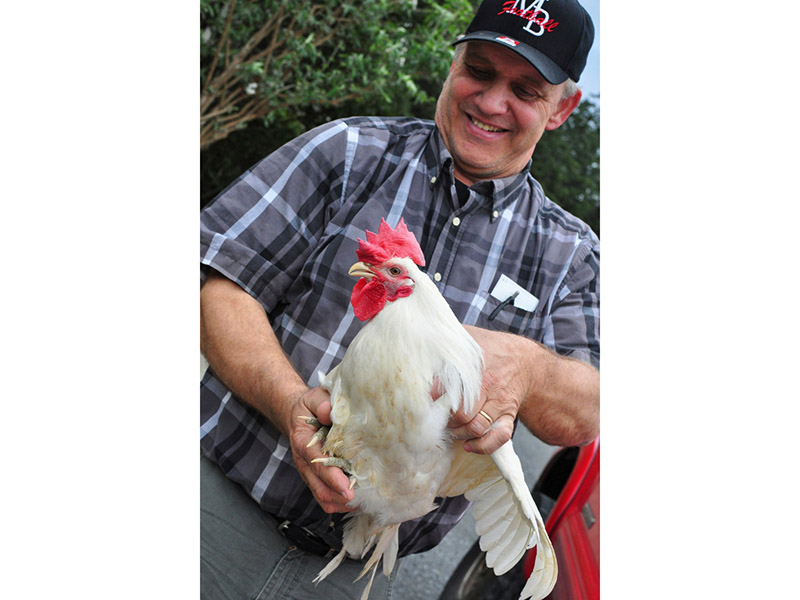As I sit here writing this post, the radio is warning of a giant snowstorm bearing down on the Twin Cities. Schools have been closed, and all anyone can talk about is how miserable their evening commute will be.
So today I’ll write about a dish I’d LOVE to come home to – especially on a night like this.
The name? BAECKEOFFE.
The origin? ALSACE, on the French-German border.
Maybe you’ve never heard of it. I hadn’t until a few years ago. Baeckeoffe is an ALSATIAN MEAT STEW from the BAKER’S OVEN. (Really, how much more do you need to know before saying, “Yes, please!”)
Julia Child once wrote, “If I were allowed only one reference book in my library, Larousse Gastronomique would be it…without question.” In 2016, New York magazine cited this seminal reference source in a piece about Baeckeoffe, describing it as a popular Monday night special among the town folk of Alsace. Why Monday? Because that was laundry day, when housewives often found themselves too busy to cook. Their solution was to prepare an earthenware casserole of mutton, pork and beef stew marinated in wine, and then drop it off at the village baker, who – like a human crockpot – was responsible for slow-cooking everyone’s Baeckeoffes in his oven after he finished his bread. Then the kids would pick up the finished dish on their way home from school.
In Strasbourg, the capital of Alsace, you’ll find no shortage of restaurants that specialize in this dish. Some have even named themselves after it. And what better place to sample the various iterations of this quintessentially regional specialty than in its largest city?
Some versions are made entirely with lamb, others with pork and sometimes duck. But most common is the combo style of mutton, pork and beef, with sliced potatoes, garlic, carrots, German Riesling wine, preserved lemon, artichokes and herbs – all layered like lasagna in a Dutch oven and sealed with a simple elastic dough of flour, egg and warm water. (I recommend Le Creuset or Staub for your Dutch oven).
If you happen to find yourself in New York City on a bitter cold winter night – and if you can summon several dining companions – be certain to go to GABRIEL KREUTHER restaurant in Midtown (I posted on this place on October 17, 2017) and treat yourself to a truly authentic dinner of classic Alsatian comfort food – including baeckeoffe.
About a year ago (April 20, 2017 to be precise), I wrote about LE COQ RICO bistro in Paris – “The Bistro of Beautiful Birds” and home, in my opinion, to the best chicken in all the world.
What does that have to do with baeckeoffe? Well, Parisian chef Antoine Westermann has since opened a New York branch of Le Coq Rico (near Gramercy Tavern, on East 20th Street) and guess what? His menu features baeckeoffe. Westermann’s take is a lighter, springtime version and features roast chicken instead of the meaty combo. I haven’t tried it, but I sure as hell will, because, based on my dining experience at Le Coq Rico in Paris, it will be delicious.
Here’s where things get a little tricky if you make this at home (and you CAN make it at home; recipes are on the internet). First, the chicken: In his Paris restaurant, Westernmann primarily uses Bresse chickens – the only chickens in the world protected with France’s official A.O.C. designation (the same as with French Champagne and Roquefort cheese) guaranteeing its authenticity.
You can’t get a Bresse chicken in the United States. You can’t even get a Bresse chicken egg (see my post from July 28th, 2016: “I’m a Bresse Man”). So what to do? What to do?
Well, one of the things that makes a Bresse Chicken so special is its size. Our supermarket chickens are around 40 days old. The Bresse chicken is much older – 90 to 130 days old – and weighs in at around 7 pounds or more; double what we’re used to. This allows the older and bigger bird to develop a much deeper, richer flavor.
So you need to source a BIG FAT CHICKEN. You won’t find it at the grocery store, but a good butcher or even a chicken farmer at your local farmer’s market might have one – if only available as a preorder (in which case you’ll have to wait a month or two while the bird fattens up).
And while there are no Bresse chickens in America, we do have several breeds (depending on where you live) that will work quite well: Plymouth Rock, Amish, Blue Foot, Bell and Evans, to name a few. They’re all-natural, all free range. All are American facsimiles of the Bresse chicken.
The other thing they have in common: Price. When you look at the cost of a chicken, 90% of what you’re paying for is the feed. The older the chicken, the higher the price.
Chef Westermann seems to have locked into a breed called “Brune Landaise” at Le Coq Rico. The New York Times describes it as a chicken with “a pedigree.” From what I understand, it’s a bit milder than, say, a Plymouth Rock.
The decision you have to make: Should you seek out or prepare a traditional, three-meat Baeckeoffe, perfect for winter? Or should you look to spring and make yours with a chicken? (A warning: While Westermann’s chicken version eats lighter than others, the price is on the hefty side. It costs $140. But hey, you can get it any night of the week, AND it will feed at least two people. You may even have leftovers for laundry day.
WTF
PHIL















I would like to thank you for the efforts you
have put in writing this website. I am hoping to view
the same high-grade content from you in the future as well.
In truth, your creative writing abilities has motivated me to get my own, personal blog now 😉